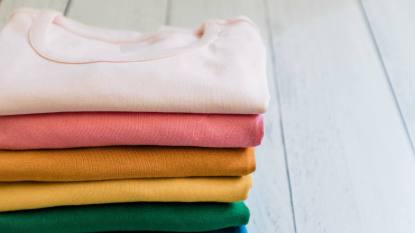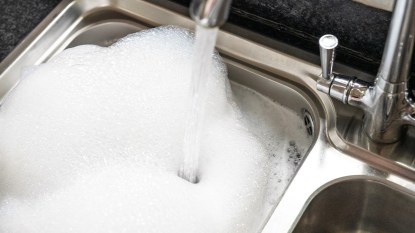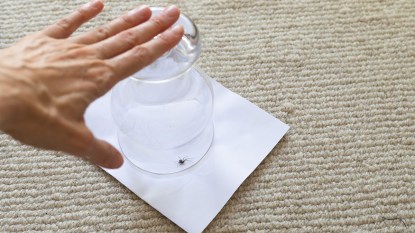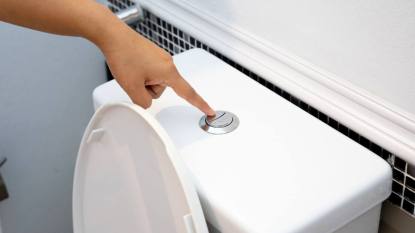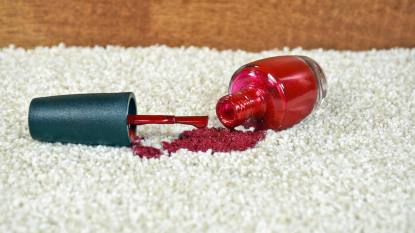Don’t Put Dish Soap in Your Washing Machine to Whiten Clothes — Try This Cleaning Hack Instead
Beware of social media hacks that use dish soap directly in the appliance.
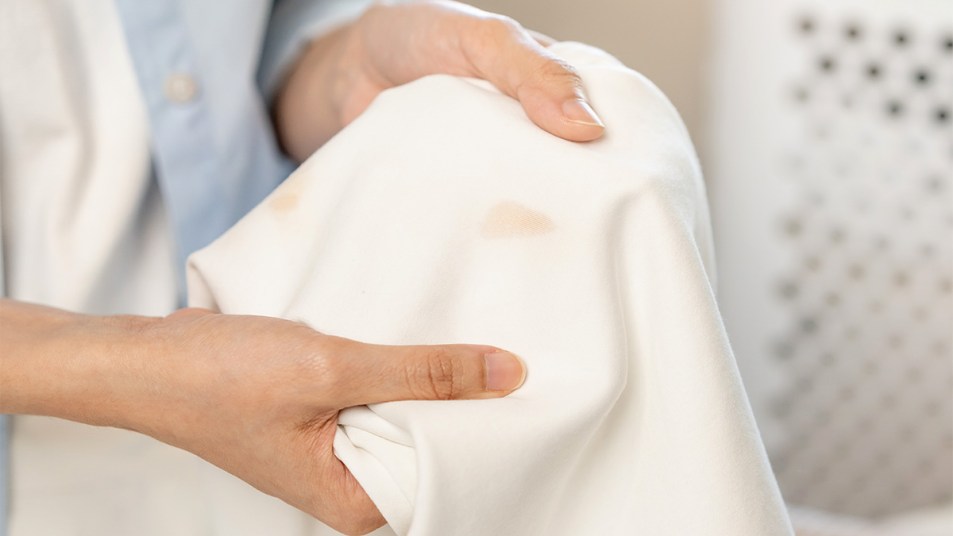
We all strive to keep our white clothes free of stains, yet they seem like a magnet for grease splatters and tomato sauce spills. Removing these stubborn stains is no easy task; from bleach to commercial stain remover, finding a laundry ingredient that banishes stains in the wash is a journey unto itself. While some people may give up in defeat, others are turning to an unexpected household item for help: dish soap. This liquid soap helps scrub away dirt and grime on your dishes, glassware, and kitchen surfaces — and many people on social media have been sharing hacks for how it also can help whiten clothes. But there’s a major downside to this trick: Dish soap’s grease-fighting powers can overpower your washing machine if it’s placed directly into the appliance. Instead, you should use dish soap to pretreat the stain before putting a piece of white clothing in a washing machine. Keep reading to learn why dish soap and washing machines don’t mix, plus how to pretreat your white clothes with this cleaning staple.
The Dish Soap Laundry Hack To Be Cautious of Trying
Admittedly, you should be cautious before trying any social media hack. This TikTok hack shows dish soap being used in a washing machine — and it can result in a laundry day disaster. The hack involves drizzling dish soap onto a cloth before adding it to a load of white clothes. Watch the video below to see the hack in action:
Although the tip is recommended in the video, dish soap isn’t formulated to be used directly in a washing machine. The experts at Dawn note that dish soaps break up grease and food stains by creating foamy studs. This effect could cause an excess amount of soap suds to form, and spill out of your machine during a wash cycle. What a mess! Dish soap was created to clean dishes and other kitchen items — not clothes — so you shouldn’t use it in place of laundry detergent to sanitize or deodorize your clothing items.
However, that’s not to say that dish soap can’t have a place in the laundry process at all. Using it to pretreat white clothes is a safer alternative to pouring it into your machine. Keep reading to learn about the modified hack.
How To Pretreat White Clothes Using Dish Soap
Pretreatment is a process that lifts stains so they disappear during the wash cycle. You can use your go-to dish soap for this step, or a potent option like Dawn Platinum Dishwashing Liquid Dish Soap (Buy from Amazon, $5.84). After pretreating your clothes, place them in a normal wash cycle with a detergent like Tide Original (Buy from Walmart, $8.99) to completely clean them. Follow these steps listed on Dawn’s website to pretreat white clothing made with white cotton or polycotton fabric:
- Depending on the size of the stain, place a dime or quarter-sized amount of a dish soap directly onto the stain. (Rule of thumb: Tiny stains need a dime-sized amount of soap, while slightly larger stains require a quarter-sized amount.)
- Rub soap into the stain, and allow the product to sit on the area for five to 10 minutes prior to washing.
- Place your clothing and detergent in your washing machine before running a normal wash cycle. Proceed with your preferred drying process.
When used correctly, dish soap takes white clothes from stained to spotless — and makes laundry day hassle-free. Note: Do not reapply dish soap to the same spot and wash again; this causes a buildup of soap on the clothing.
So Long, Stubborn Stains!
With summer on the horizon, this pretreating tip will help nix BBQ sauce or ketchup stains from your white clothes. It’ll also prevent you from having to experiment with other strain-treating options, which saves you money. Want to find more ways to make the laundry process easier? Check out our story on laundry hacks that remove odors from clothes, fluff towels, and guarantee you’ll never lose socks again.


